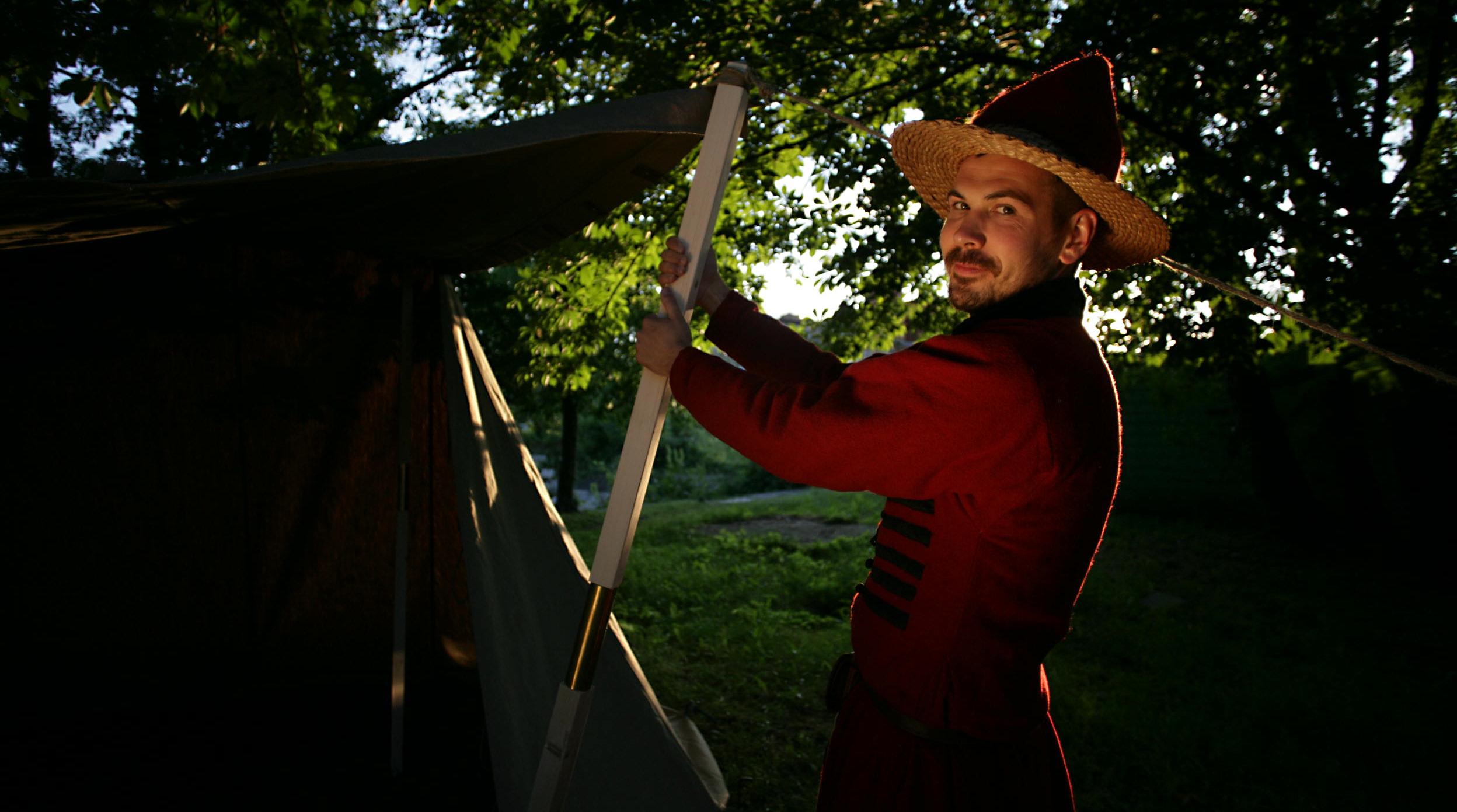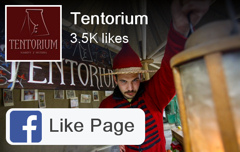I. Orders
You can order by sending a simple email including the type of the historical tent you’ve chosen, the shipping address and your phone number. We will get in touch with you within 1-2 working days to work out the details of your order.
The tent may take up to 3-4 months to produce during peak season, counted from the date of the advanced payment.
That’s why we encourage you to order as soon as possible in order to make sure that your new tent is ready on time.
It is, however the cost increases greatly and is assessed individually.
All Tentorium tents are produced at our headquarters in Poland exclusively to order.
We normally do not have any tents available in stock.
Yes, we can adjust the size of almost every tent to your needs.
Almost all of our historical tents are sent together with all necessary components, i.e. with masts, ropes and metal pegs plus a linen bag for the latter.
Yes, each of our tents is under a one-year warranty, which covers all seams and possible defects resulting from mistakes during production.
Unfortunately, this warranty does not cover any damage which arose from misusing tent or mechanical damage, including improper storage, which may cause mold and rot of the fabric as well as wood.
Please bear in mind that all Tentorium historical tents are made out of 100% natural fabric, therefore they need to be handled with care and dried after each outing. Storing in a dry place is mandatory.
The wooden masts have to be impregnated on your own, you can also order this to be done for you at an additional cost. What is more, all wooden elements need to be stored in a room with a constant humidity of 45% – 60%.
II. Costs and payments
No, an advance payment of 60% when placing your order will suffice, the rest will need to be paid when the tent is ready, before we ship it.
The standard shipping cost to EU countries is 75 EUR for every 50 kilos.
Small historical tents, e.g. market tents, cone-bell tents or soldier triangles usually fit within this range.
Big historical tents like double-mast pavilions, yurts or big and rectangular pavilions weigh around 100 kg, with a shipping cost of 150 EUR.
Every Tentorium historical tent has a standard 10 cm-long windflap.
No, the cost of all paintings and ornaments is assessed individually.
III. Technical info
No, you will receive a bag for the metal pegs, we can provide bags for the tent and masts at an additional cost, however, we don’t recommend storing the historical tent in a bag, as it may contribute to the tent getting mold or another type of fungus.
Only rubber is 100% waterproof, historical tents made from natural fabrics are waterproof at circa 20-40 hPa.
Due to their construction and a steep roof (ca. 45 degrees), water flows freely down the tents, which ensures their water resistance.
We saw tents from the thickest natural grey linen available on the market, 700 g/m2.
Yes, this fabric is originally impregnated with paraffin-based substances, which increases its water-resistance.
Unfortunately not, Tentorium historical tents are made from 100% natural fabrics, therefore need to be taken care of with diligence, dried after every outing and it is mandatory that they are kept in a dry and warm place.
The wooden masts need to be impregnated on your own (we can also do it for you at an additional cost). Additionally, all wooden elements need to be stored in a room with a constant humidity of 45% – 60%.
No, you need to remember that a historical tent has a light frame. When the wind reaches 60 km/h, i.e. is at a 7 on the Beaufort scale (Whole trees in motion; inconvenience felt when walking against the wind. Branches torn from trees. Cars swerve due to the wind.), you need to fold the tent and find a safe place to wait out the storm.
In general we impregnate only spokewheel hub from deciduous wood and the elements which are outside the tent, e.g. a wooden peg or ball at the top of the tent.
Naturally, we can impregnate the rest of the wood for you at an additional cost.
When it’s raining you need to lower the roof of the tent so that the water can flow downwards. You need to get rid of the excess water every once in a while.
Nope, the historical tent is made of 100% natural fabric, putting a heavy burden on it may cause the tent’s fabric to extend irreparably.
Sure, it’s your tent after all, made especially for you for a hefty sum, however, this will irreversibly void your warranty with an immediate effect.
Unfortunately not, there is a ban on lighting fire in Tentorium historical tents. Should any such actions be undertaken by the owner, they are taken at the owner’s responsibility and result in voiding the warranty with immediate effect.
No, tents made of natural fabrics like linen are meant to be used for a couple days (depending on the weather) and need to be thoroughly dried before storing in a warm and dry place.
For all-year-round use we offer tents made of special semi-synthetic fabric which looks like natural cotton.

